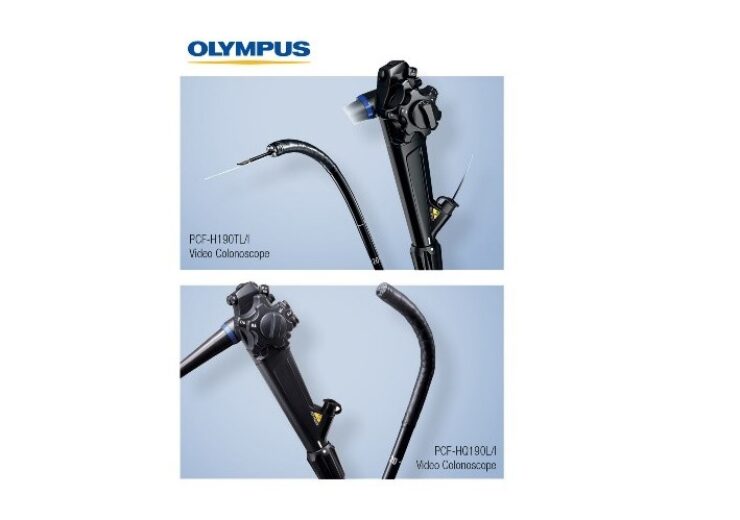The benefits of HQ Dual Focus imaging and imaging modalities like Narrow Band Imaging (NBI), now available through a smaller diameter colonoscope, combine with capabilities such as retroflexion, to advance procedures and improve colonoscopy

Olympus launches new colonoscopes which expand capability in minimally invasive procedures. (Credit: PRNewswire / Olympus Medical Systems Group)
Olympus announced today the 510(k) clearance and market availability of two colonoscopes, the PCF-H190T and the PCF-HQ190. The products provide an extension to the existing capabilities for physicians to diagnose and treat disorders of the gastrointestinal tract.
The benefits of HQ Dual Focus imaging and imaging modalities like Narrow Band Imaging (NBI), now available through a smaller diameter colonoscope, combine with capabilities such as retroflexion, to advance procedures and improve colonoscopy.
“With these GI endoscopes, Olympus continues to raise the bar on increased functionality, bringing the market a slimmer diameter endoscope, all while providing imaging excellence toward future innovations,” said Kevin Mancini, Vice President for Endoscopy at Olympus America Inc. “We know our physician customers are excited about these advancements that will improve their access and visualization of the anatomy as well as a growing range of treatment modalities.”
The new PCF-H190TL/I endoscope is a slim, short-bending scope that allows for tighter angulation without compromise to the passage of treatment accessories. Used with the EVIS EXERA III imaging platform, the PCF-H190TL/I is an HD device with a 510(k) claim for Narrow Band Imaging (NBI), which indicates NBI as a “high confidence” assist to an experienced endoscopist employing a validated polyp classification system such as the NBI International Colorectal Endoscopic (NICE) classification, aiding in distinguishing diminutive adenomatous polyps from non-adenomatous polyps during colonoscopy. Other features include:
Better retroflexion capability, a technique associated with improved adenoma detection rate (ADR).
Appropriate channel layout for passage of therapeutic accessories, such as for hemostasis or polypectomy.
Improved insertability to minimize patient discomfort.
The new PCF-HQ190L/I is equipped with Dual Focus technology for increased mucosal visualization. Used with the EVIS EXERA III imaging platform, the endoscope’s NBI plus its near focus mode is associated with a greater than 90% agreement with pathological analysis in assigning post-polypectomy surveillance following colonoscopy. Other features include:
A 170-degree angle of view and a new level of resolving power to support detailed observation and facilitate lesion detection.
Responsive Insertion Technology (RIT) to facilitate complete colonoscopies and reduced cecal intubation times through better maneuverability.
Built-in ScopeGuide Function to provide real-time 3D visualization of the scope’s position and configuration during insertion, including identification of scope loops as they form.
“Our practice benefits from different endoscopes for different applications,” said Peter V. Draganov, MD, professor of medicine and the director of advanced therapeutic endoscopy at the University of Florida Health, Gainesville, FL. “We are pleased that Olympus continues to fortify its offerings with design, imaging and therapeutic advancements. These short-bending endoscopes are exciting for their potential to drive ADR rates down across the industry.”
Source: Company Press Release
